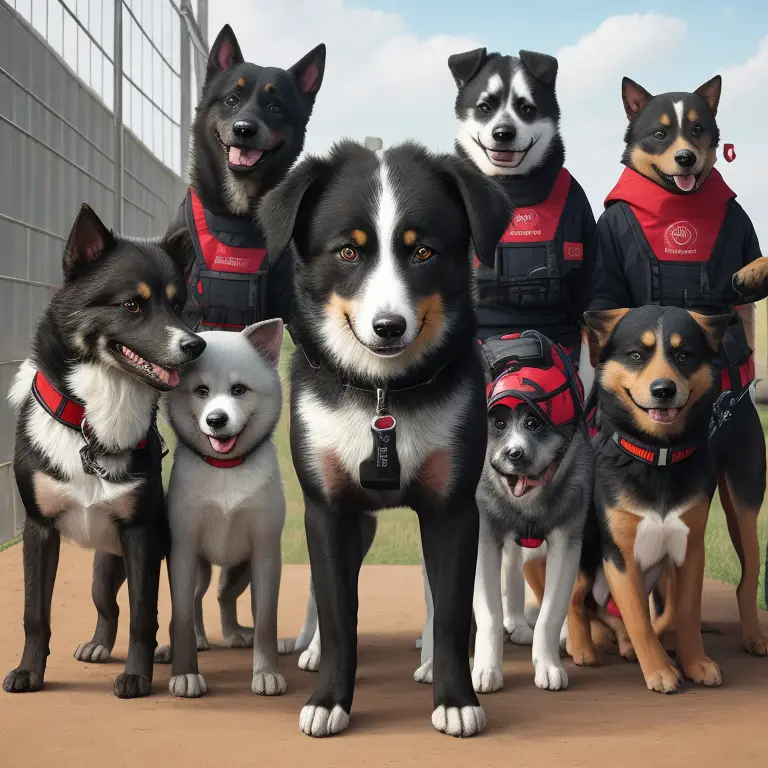
Introduction
- Often, rescue dogs often come from various backgrounds, each with its unique challenges and experiences. Training a rescue dog requires patience, understanding, and a positive approach. This article will guide you through the process of training your rescue dog, from understanding their behavior to teaching them basic and advanced commands. By the end of this article, you will have the knowledge and confidence to understand how to train a rescue dog.
Understanding Your Rescue Dog
- Patience and understanding are crucial when training a rescue dog. These dogs may have experienced trauma or neglect, affecting their behavior and response to training. It’s essential to build trust and establish a strong bond with your rescue dog before starting any training. This process may take time, but it’s vital for a successful training experience. The Spruce Pets provides excellent tips on building this relationship.Common behaviors and challenges with rescue dogs include:
- Fear and anxiety
- Aggression
- Separation anxiety
- Lack of basic training
- Socialization issues Understanding these behaviors and challenges is the first step to addressing them effectively. Embark Dog DNA Test offers valuable insights into managing these common issues.
Basic Training for Rescue Dogs
- Basic training is essential for any dog, especially rescue dogs. It provides a foundation for a well-behaved and well-adjusted pet. Basic training also strengthens the bond between you and your rescue dog, building trust and mutual respect.Tips for successful basic training include:
- Start with simple commands like sit, stay, and come.
- Use positive reinforcement, such as treats and praise.
- Be consistent with commands and rewards.
- Practice regularly, but keep training sessions short and enjoyable.
- Be patient and understanding, especially with rescue dogs that may have had negative experiences with training in the past.
Common commands to teach your rescue dog are:
- Sit
- Stay
- Come
- Lie down
- Leave it These commands provide a solid foundation for your rescue dog‘s training and will help them become well-behaved and happy pets.
Advanced Training and Socialization
- Advanced training and socialization are crucial for a well-rounded and well-behaved rescue dog. These steps go beyond basic commands and focus on more complex behaviors and interactions with other dogs and people. Advanced training can include off-leash training, agility training, and more. Socialization involves exposing your rescue dog to various environments, people, and other animals to help them become more adaptable and less fearful.Tips for successful advanced training and socialization include:
- Gradually introduce new environments and people.
- Use positive reinforcement to reward good behavior.
- Be patient and understanding, as rescue dogs may have had negative experiences in the past.
- Practice regularly to reinforce new behaviors.
- Seek professional help if needed, such as a dog trainer or behaviorist.
Common challenges and how to overcome them:
- Fear and anxiety in new situations: Start slow and use positive reinforcement to build confidence.
- Aggression towards other dogs or people: Consult a professional trainer or behaviorist for guidance.
- Lack of focus during training: Keep training sessions short and engaging, and use high-value rewards.
- Difficulty learning new commands: Be patient and consistent, and break commands into smaller, manageable steps.

FAQs
- What is the 3-3-3 rule for rescue dogs? The 3-3-3 rule is a guideline for adjusting a rescue dog to its new home. The first three days are about settling in, the first three weeks are about learning routines, and the first three months are about feeling fully at home.
- How long does it take to train a rescue dog? The time it takes to train a rescue dog varies depending on the dog’s age, breed, and past experiences. Some dogs may pick up commands quickly, while others may take longer.
- How do you discipline a rescue dog? Positive reinforcement is the best way to discipline a rescue dog. Avoid punishment, as it can harm the bond between you and your dog and potentially worsen behavior problems.
- What is the hardest part of adopting a rescue dog? Overall the hardest part of adopting a rescue dog can be dealing with behavioral issues stemming from past trauma or neglect. Patience, understanding, and positive reinforcement are key to overcoming these challenges.
Conclusion
- Summary of key points: Training a rescue dog requires patience, understanding, and a positive approach. Start with basic commands, then move on to advanced training and socialization. Be patient and consistent, and use positive reinforcement to reward good behavior.
- Encouragement for the journey ahead: Adopting and training a rescue dog can be a rewarding experience. All things considered it may have its challenges, but the bond you will build with your dog is worth it. Remember to be patient, understanding, and positive, and you will have a well-behaved and happy pet.




